Automatic Bill Payment: What It Is, How to Set It Up, Pros and Cons
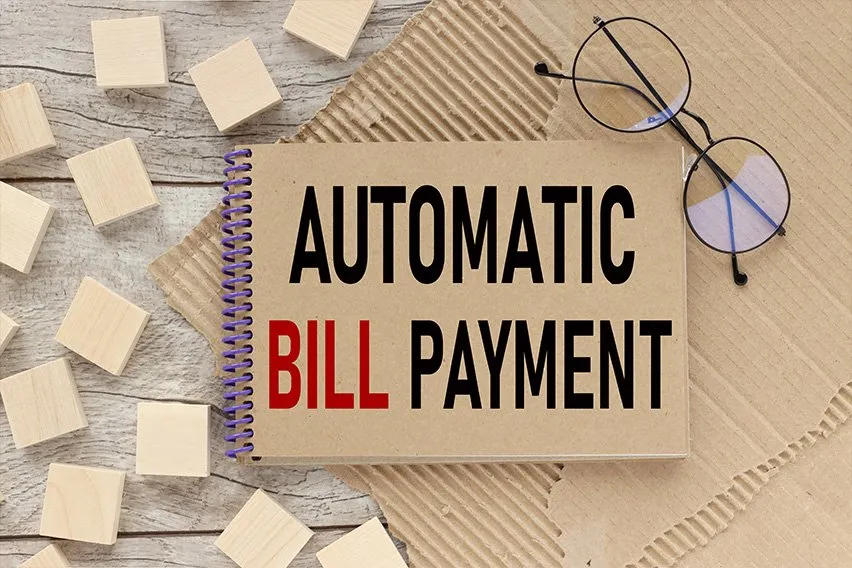
Paying bills can be a time-consuming process for your clients, but only if you’re making them do it manually. By offering automatic bill payments, you’ll be simplifying the process of recurring bill payments and helping your customers avoid late fees. Plus, it saves you the trouble of sending out repeated invoices, meaning you get paid faster. In this guide, we’ll explain the benefits of setting up automatic bill payments, as well as explain how to do it yourself. Let’s take a look.
Key Takeaways
- Automatic payments allow you to receive funds from your customers without the need for manual invoices or payment processing.
- Accepting automated payments saves you time and money, all while providing a better customer experience.
- Automatic bill payments work via ACH bank transfer, credit and debit card payments, or PayPal transactions.
- Automating your payments will improve cash flow for your business, but they’re not suitable for irregular payments or clients that don’t pay their entire balance at once.
- Online payment tools can make accepting an automated payment even easier for your business.
Table of Contents
- What Is an Automatic Bill Payment?
- How Does Automatic Bill Pay Work?
- How to Set Up Automatic Payments
- Setting Up Automatic Bill Payments with FreshBooks
- Automatic Payments Example
- Pros and Cons of Automatic Bill Payment
- How to Manage Your Automatic Bill Payment?
- Automatic Payments Made Easy with FreshBooks
- Frequently Asked Questions
What Is an Automatic Bill Payment?
An automatic payment refers to the process of automatically transferring funds from a client’s account on a scheduled date to pay a recurring bill. Automatic billing can be authorized with a credit card, debit card, or bank account, allowing the biller to collect money on a regular schedule.
Typically, automatic payments are used for recurring charges, such as:
- Utility bills
- Mortgage payments
- Credit card bills
- Phone bill
- Car payments
- Internet bills
- Subscriptions
- Retainer fees
- Loan repayments
- Other recurring business fees that remain the same from month to month
One thing to bear in mind is that not all businesses can accept automatic bill payments, meaning clients will have to manually send payments online, write checks, pay by phone with a credit card, or provide cash.
How Does Automatic Bill Pay Work?
There are two main ways that automatic bill payments work: Automated Clearing House (ACH) transfers, a type of electronic funds transfer (EFT), or by credit card.
When your clients set up automated payments via their bank, they pay via an ACH transfer. This essentially means they tell their bank or credit union who, when, and how much to pay and provide their authorization, which allows the bank to deduct that amount from their account each month and transfer it to the designated biller.
The other method is via credit card—this is done by getting your clients credit card information (card number, expiration date, and CVV), which you then use to process a credit charge on the agreed-upon payment dates. This essentially means that you, as the biller, are paid by the credit card company, which the clients then repays when they pay their credit card bill.
How to Set Up Automatic Payments
If you’d like to better understand how your clients can schedule automated payments, or if you’re interested in paying bills with the service, here are three methods of setting up automatic bill pay:
Through Your Financial Institution
- Log in to your bank’s online banking portal through its website or mobile app.
- Navigate to the Bill Payment page of the site.
- Click “Add A New Payee.”
- Enter the company name.
- Add your account number with the company.
- Schedule a single payment, or use automatic bill payment to schedule recurring payments according to a set schedule.
If you need a step-by-step walkthrough of the process read our post on How to Set up Automatic Payments for your business. Note that the steps may vary slightly from bank to bank. If you have trouble, contact your bank directly for assistance.
Automatic Bill Payment Through a Business Website
Setting up automatic bill pay directly through a business’s website is another option, but the process to do so varies from business to business. Here are the basic steps you’ll need to follow, but if you have trouble setting up the service, contact the company directly for assistance.
- Log in to your online account on the business’s website or mobile app.
- Navigate to the Billing or My Account section of the site.
- Click on the option for Automatic Bill Payments or Recurring Bill Payments.
- Choose your payment method, whether a credit card account or online bank withdrawal.
- Set the payment schedule you’d like your payments to follow, whether weekly, biweekly, or monthly.
Automatic Bill Payment Using Credit Card
Accepting automatic payments by credit card is simple and convenient for your clients. Here’s how to do it:
- Create a business account with a payment service provider (PSP), such as PayPal, Stripe, Shopify, or Square.
- Integrate your PSP with your website—most modern website builders make it simple.
- If your website can’t integrate a payment processor, you can link to your PSP of choice, such as with PayPal’s ‘Pay Now’ button.
- Using your PSP, indicate how often and how much to charge each client. Your clients will be billed automatically, and the funds will be transferred to whatever account is linked to your PSP.
Setting Up Automatic Bill Payments with FreshBooks
If you use a cloud-based accounting solution, your clients can set up automatic payments using a credit card, ACH bank transfer, or PayPal account directly through your accounting software. The steps for setting up the service will vary depending on the service provider.
With FreshBooks Payments powered by Stripe, you can set up recurring invoices and automatically record each payment in your account. Here’s how to set up automatic bill pay through FreshBooks:
- Go to the Invoices section and click Create a New Invoice.
- Fill out the Client information and invoice details, then click Make Recurring in the Settings panel on the right.
- Choose the recurring schedule by selecting a Start Date, How Often to generate invoices, How Many invoices to generate, and select the Delivery Options.
- Click Done to confirm the invoice and scheduling details.
You can also use the Freshbooks Advanced Payments add-on service, which not only lets you set up recurring invoices and store your clients’ credit card details but also enables you to charge them proactively.
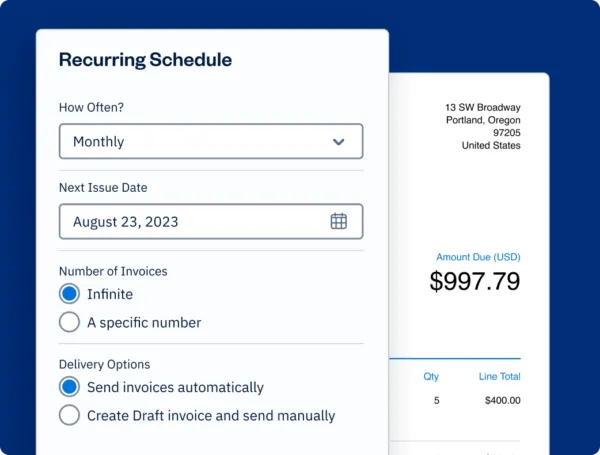
Automatic Payments Example
To better understand the benefits of automatic bill payments, let’s use a real-world example. Let’s say that you run a marketing firm that works on retainer for a few clients. One client pays $3,000 per month for your services, and their bill is due on the first of every month.
In order to save time for you and your client, you set up an automatic bill payment agreement with them via ACH bank transfer. After providing the client’s bank transfer information to your own bank, the client now pays this $3,000 monthly bill automatically. This means no more late or forgotten invoice payments, no more late fees, and no hits to their credit score since the funds come directly from their bank account.
Pros and Cons of Automatic Bill Payment
There are many advantages to accepting automatic bill payments as a business, but there are also some hidden disadvantages to be aware of:
Pros
- Save time when billing by eliminating the need to manually generate and send invoices, process payments, and follow up on overdue bills
- Reduce business costs such as paper, envelopes, and postage for physical invoices
- Provide a faster, more convenient, and modern payment experience to your clients
- Improve cash flow by eliminating late payments and ensuring you always get paid when you expect to
- Offer improved security and peace of mind by processing all payment information through secure, encrypted, automatic bill payments
Cons
- Automated bill payment isn’t ideal if you don’t charge clients the same amount each time they’re billed
- If your clients don’t always pay their entire balance on time, it can be difficult to set up automated payments
- Because of the hands-off nature of automated payments, it can be easy to miss billing mistakes at first
- It can be time-consuming to cancel an automatic payment agreement
How to Manage Your Automatic Bill Payment?
Managing your automatic bill payments properly will free up time for you to focus on growing your business. Here are a few ways to keep it under control:
- Keep a payment calendar with dates for all upcoming payments from clients to better plan your financial activity for each month
- Try to time the bills you pay so that they coincide with incoming client payments
- Regularly review your accounts to ensure all payments are coming through as expected
- Set up banking alerts so you’re notified when you receive a payment
- Keep in touch with clients to ensure they update their credit card/banking information when necessary
Looking for a way to make automatic bill payment as simple as possible and start seeing steady cash flow in your business? FreshBooks Payments powered by Stripe is a powerful tool for companies looking to set up automatic billing that makes payments easy for their clients.
Automatic Payments Made Easy with FreshBooks
Automatic bill payment makes life easier for you and your clients alike—especially if you use a top-of-the-line tool to accept them. FreshBooks makes automatic bill payment simple, allowing you to automatically receive funds via credit card payment, ACH transfer from a savings or checking account, or PayPal transaction. With integration with our recurring invoice tools, flexible payment schedules, and automatic payment reminders, FreshBooks is the best tool to help ensure timely payments and seamless integration into your existing accounting system. Try FreshBooks free today!
FAQs on Automatic Bill Payment
Do banks offer automatic bill payments?
Yes, most banks offer automated payment (meaning bills that are automatically paid from a bank account). You can find this information in the section of their website that describes their online bill payment services.
Is it safe to pay bills with autopay?
Yes, it is a secure method of bill payment, as long as you are certain you will always have the correct amount of funds available in your bank account. You will default on payment if you do not have the money in your bank. Missed payments will negatively affect your credit score and cause overdraft fees to accumulate.
What is the difference between billing and autopay?
When you are billed for a service, you must take action to pay the bill yourself, while with an autopay setup, the vendor initiates the charge to your bank account, debit card, or credit card in recurring automatic payments.
What is the safest way to pay your bills?
It is usually safest to pay your bills using a credit card because they offer strong security measures, fraud protection, and help in the case of unauthorized charges. Online bill pay through your bank is also very secure, but you will want to initiate the payment or set up the autopay function yourself without giving anybody else access to your bank account information.
Do automatic payments hurt your credit?
Your credit score may be damaged if you do not have enough money in your bank account to cover your autopay bills, like phone and credit card bills. It is important to keep a close eye on your cash flow if you have authorized automatically recurring payments from your account so you do not accidentally have missed payments on your record.
About the author
Michelle Payne has 15 years of experience as a Certified Public Accountant with a strong background in audit, tax, and consulting services. Michelle earned a Bachelor’s of Science and Accounting from Minnesota State University and has provided accounting support across a variety of industries, including retail, manufacturing, higher education, and professional services. She has more than five years of experience working with non-profit organizations in a finance capacity. Keep up with Michelle’s CPA career — and ultramarathoning endeavors — on LinkedIn.
RELATED ARTICLES




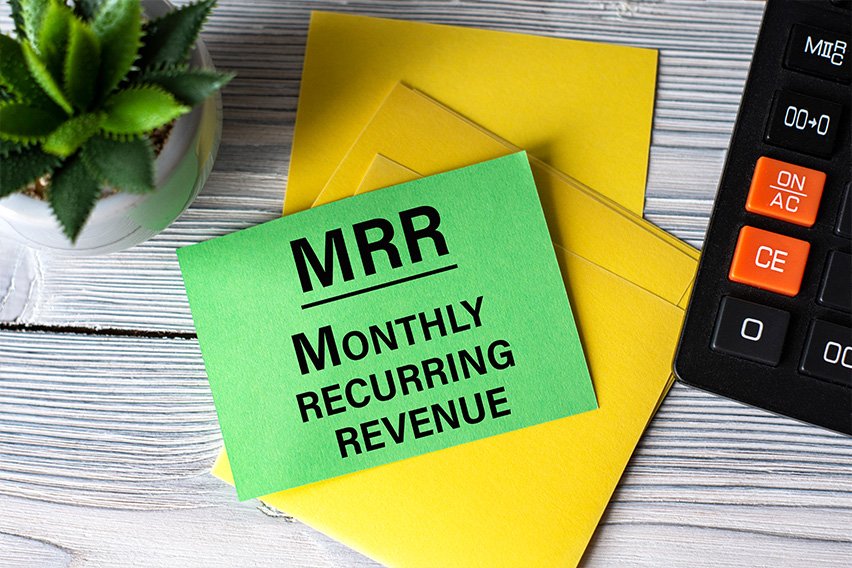 What Is a Recurring Payment? How to Get Paid Faster with Automatic Billing
What Is a Recurring Payment? How to Get Paid Faster with Automatic Billing How to Accept Credit Card Payments
How to Accept Credit Card Payments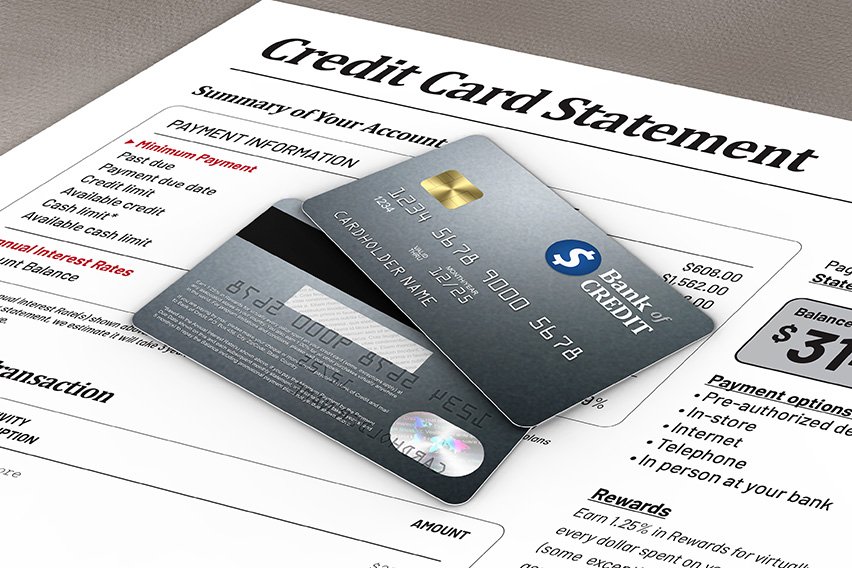 How to Make Your Customers Pay for Credit Card Fees
How to Make Your Customers Pay for Credit Card Fees How Long Do You Have to Pay an Invoice
How Long Do You Have to Pay an Invoice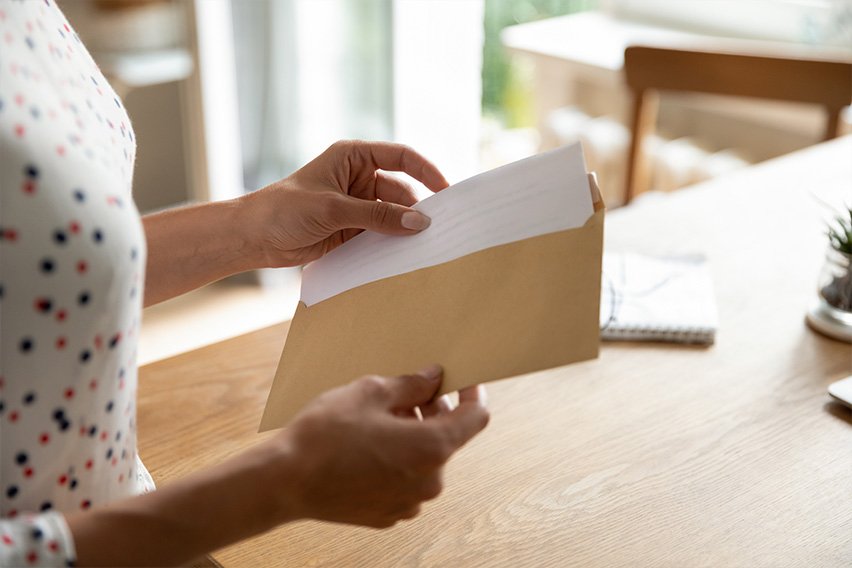 How Much Does It Cost to Send an Invoice?
How Much Does It Cost to Send an Invoice?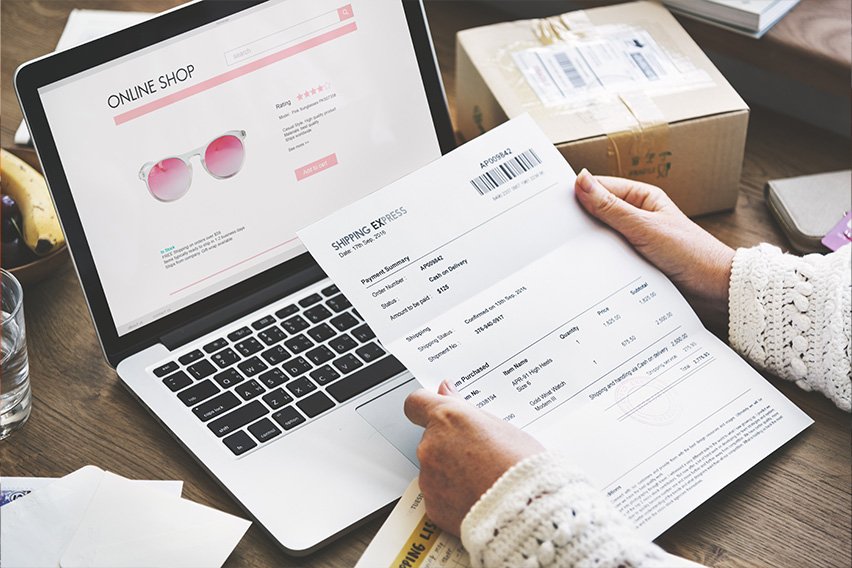 What Does Payable by Invoice Mean?
What Does Payable by Invoice Mean?